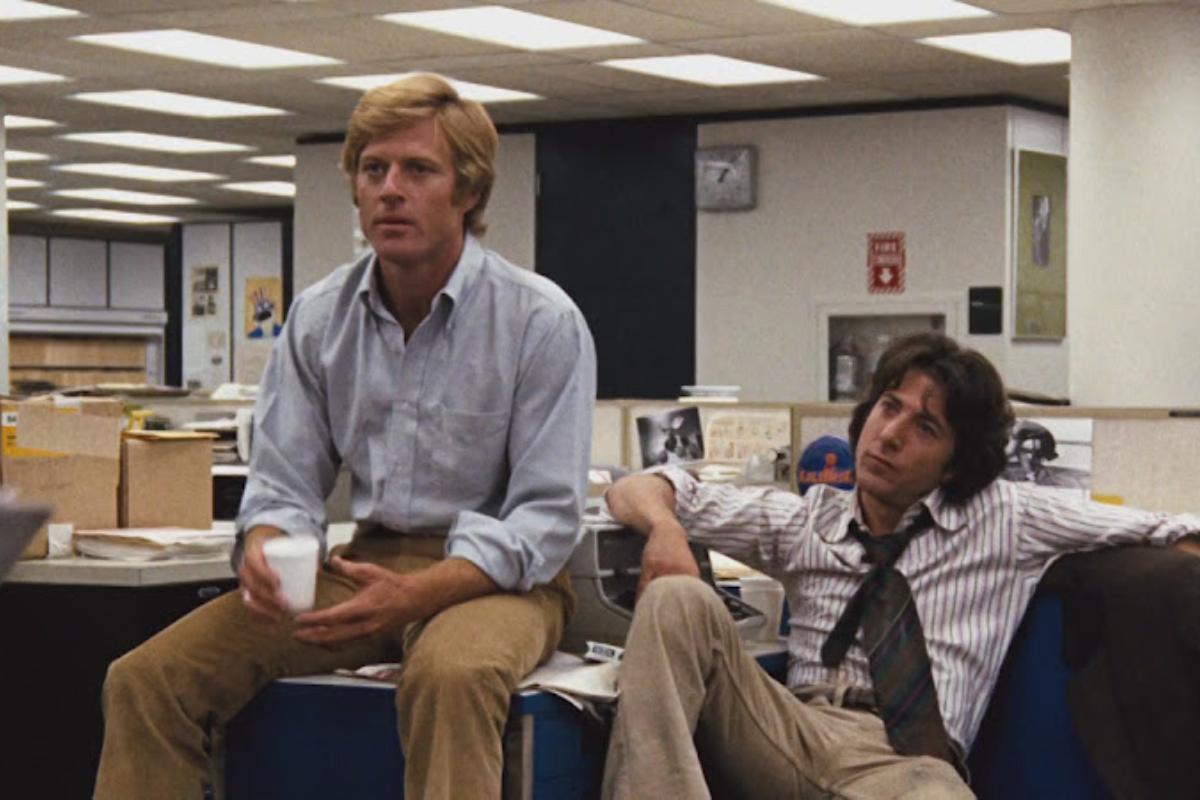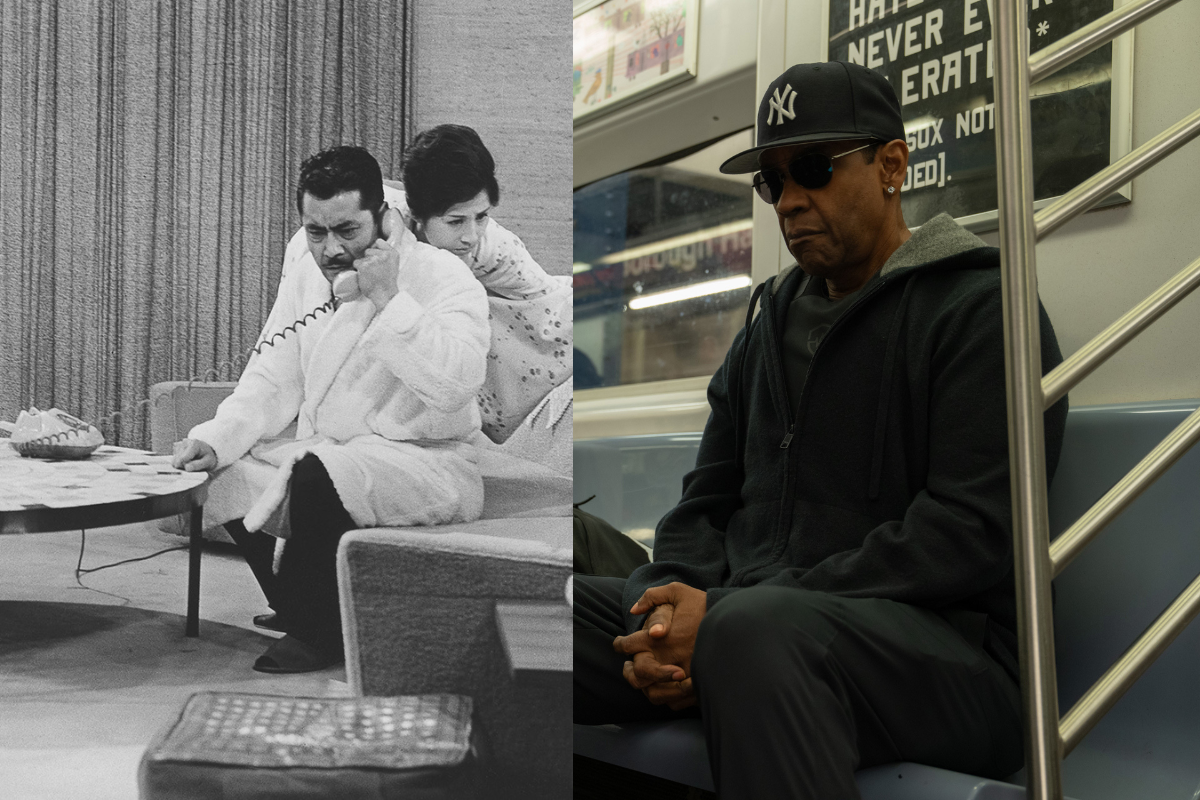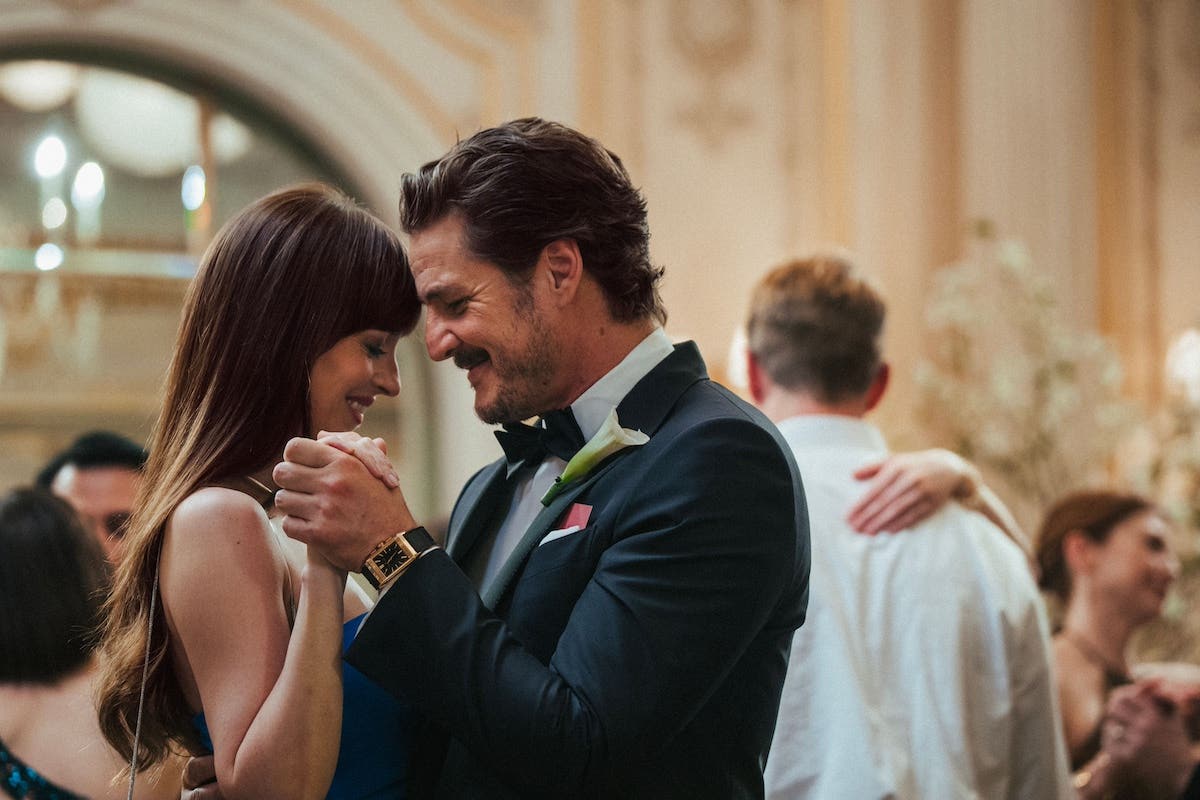UNDERSTANDING SCREENWRITING: A Bunch of Films and Joseph Wambaugh
The films are Black Bag, Eephus, and On Becoming a Guinea Fowl, and Joseph Wambaugh was, well, Joseph Wambaugh.
A Good Little Movie.
Black Bag (2025. Written by David Koepp. 93 minutes.)
You all know David Koepp from the big movies he has written: Jurassic Park (1993), Mission Impossible (1996), The Lost World: Jurassic Park (1997), Spider-Man (2002), Indiana Jones and the Kingdom of the Crystal Skull (2008), and Indiana Jones and the Dial of Destiny (2023).
Whew!
What you may not also know is that he writes some good smaller-scale films: The Little Engine That Could (2011), Ghost Town (2008), and Panic Room (2002).
Double whew.
Black Bag is a smaller film, but it is the spawn of his first Mission: Impossible script. While he was researching for the earlier film, he talked to several spies. Given that the MI films bear no relation to real spies, you have to wonder why he talked to them. One thing they told him was that it was difficult to have personal relationships if you are a spy. You lie professionally in that job, which means you learn how to lie to the people in your private life. Or, at least, it is really hard to always tell them the truth. Assuming you always want to tell those closest to you the truth.
Black Bag is as much about relationships as it is about spying and it has some of the humor about relationships that Ghost Town had. The setup is that George, part of a counter-intelligence group (Koepp does not use the standard MI5 and MI6 organizations and no, I don’t know why, except for convenience), and in the opening scene, a fellow spook tells him there is a traitor in their midst, one of whom might be George’s wife Kathryn. He has until the following Friday to find out who it is, or else something bad will happen with the McGuffin—the traitor may or may not be sold to the Russians.
So, George invites the other four to dinner at his house along with Kathryn. Koepp then has a 14-page (by his count), 16-minute (by a critic’s count) dialogue scene. You try sneaking that past Spielberg. The director here is Steven Soderbergh, who loves challenges like that. The scene works because it introduces us to the characters in witty and interesting ways. The scene also works because it has been cast properly. George is played by Michael Fassbender, Kathryn by Cate Blanchett, and the other four are played by Tom Burke and Marisa Abela (neither of whom I have ever heard of) as a romantically involved couple (until she stabs his hand with a dinner knife and even after) and another couple played by Regé-Jean Page (late of “Bridgerton”) and Naomi Harris (who is not, really, playing Miss Moneypenny as she has in the later Bond films).
George goes about investigating these five people, and the evidence that the traitor may be Kathryn keeps piling up.
Now I am not going to tell you any more of the plot. For two reasons: I hate spoilers, and I am not sure I could completely explain the last half hour or so. It seemed to make sense as I was watching it, but maybe it does not.
This not a big, lavish, action-filled spy movie, like the Bond movies or the Mission: Impossible ones. This one is not for you if you want one of those. It is a very sharp, witty look at marriage and other relationships, and very entertaining in its own way.
If it will help you decide to go see it, there is one car explosion and two dead bodies. And a small rowboat … that George uses for fishing … and other things …
If You Attend the Church of Baseball …
Eephus (2024. Written by Michael Basta, Nate Fisher, and Carson Lund. 99 minutes.)
Let’s get the bad news out of the way. Eephus is not going to give Bull Durham (1988) a run for its money as the Greatest Baseball Movie of All Time. It does not have Ron Shelton’s brilliant writing and direction. It does not have Kevin Costner and Tim Robbins’ star power. And it definitely does not have Susan Sarandon’s Annie Savoy. So if you want another Bull Durham, go watch your DVD of the original.
But if you love baseball, then you will enjoy this movie. Bull Durham had good bones: basic dramatic structure, great characters, and the wonderful atmosphere of minor league baseball. Eephus (the name of an oddball pitch that seems to slow down when you least expect it) has the rhythm of baseball. It is slow. It drags. There are periods when nothing happens. Then there is some action. And then nothing more happens. This is not about the major leagues, or the minor leagues, but the amateur area of what are called the recreational leagues.
In many films with multiple screenwriters, it is difficult, if not impossible, to tell who did what. Here, it is easy. Carson Lund, who also directed, had long wanted to do a film about the recreational leagues, in which he played for years. In an interview in the Los Angeles Times, Michael Basta said, “Carson knew the game play. Nate knows fun, weird, trivial parts of baseball, and I had the off-the-field stuff. It was a funny mix of different baseball minds.”
The situation in the film is that two teams in the recreation leagues are playing the last game on the field they have played on for years. It is about to have a school built on it. If this were a conventional Hollywood film, it would not be a school, but a big mess by an evil developer. But it will be a … school. While we may feel good about that, the men, early- to late-middle age, are not in favor of the school. Listen to what they say about it.
One problem I had with the baseball players is that they are not individualized enough so that we know them that well. Shelton was much better at defining his major and minor characters. Here, some you get as you pick up their rhythms, some you don’t.
In addition to the players, there are assorted people who show up at the park, but most have no interest in baseball. They do help the atmosphere.
The game goes into the night, and since there are no lights, they play in the dark, which makes the game as difficult and funny as you think it would. I think this section goes on longer than it needs to. And the film has been promising a fireworks show, which it turns out not to really deliver, I suspect, for budgetary reasons. We get some light, but not enough.
Joseph Wambaugh: An Appreciation.
Joseph Wambaugh, a novelist and writer of nonfiction books, died on February 28th. You may be familiar with his novels, which include The New Centurions, The Blue Knight, The Choirboys, and 14 others. His nonfiction includes The Onion Field and Fire Lover. Some of his books were made into films, many of which he detested.
I am writing about Wambaugh in this column because his work in television changed the nature of cop shows forever. Before he co-created Police Story in the early ’70s, cops on television were noble, brave, without flaws. Wambaugh, who had been on the L.A. police force for 14 years, knew what cops were really like. That’s what his novels were about, which irritated the higher command of the LAPD.
In 1972, David Gerber, a producer at Columbia, found Wambaugh’s proposal for the Police Story series in the files. Gerber put Wambaugh together with writer E. Jack Neuman, who wrote pilot scripts. Neuman and Wambaugh took the project to an executive at NBC who loved it, but asked, “Who do you see in the lead?” Neuman and Wambaugh started to leave, explaining this was an anthology, with no one leading actor. The executive hesitated, but then agreed.
The big advantage to writing an anthology show is that writers (and the producers and directors) did not have to deal with egotistical stars. As one writer, E. Arthur Kean said, “They (egotistical stars) do one [PoliceStory] show and they behave like an ass, they’re never asked back.”
Gerber brought together several of the best writers in the business. E. Arthur Kean walked into the first meeting of a group of writers, and there were “10 of the best writers I know. I was really flattered to be in their company.” Wambaugh essentially gave them the mantra for writing the show: “The cops work the case, and the case works on the cop.”
Wambaugh did not write for the show, but Liam O’Brien, the story editor, would send the scripts to Wambaugh for review. Here are some of the comments Wambaugh wrote on various scripts:
“He pulls a search warrant out of his hat like a rabbit … you cannot get a warrant for suspicion of being an asshole.”
“More paternalistic, cop propaganda … Leave off the Jack Webb [creator of “Dragnet”] stuff about taking care of them. You know, them, the dumb civilians?”
On a scene of a grandmother shooting her 11-year-old grandson full of dope: “I don’t think this works. It’s just too macabre. Once again, never mind that it’s true, it doesn’t seem true.”
But Wambaugh could be kind to writers. He wrote about one, “He’s a fine writer and might be tight-jawed about being totally rewritten. Just tell him I’m nuts, ego mad, see myself as the Sundance Kid, etc. Tell him anything you can think of to keep his ego intact.”
Wambaugh was upset that too often the show cast conventionally handsome leading men. “Is somebody over their fruit for these macho personalities to the extent that they be cast in important roles? ... I wish the responsible guy(s) for casting he-men instead of qualified actors would hurry up and come out of the goddamn closet instead of acting out their fantasies at the expense of what used to be best dramatic show on television.”
Wambaugh, looking at these notes fifteen years later, wrote, “These letters are proof (80) that booze and correspondence don’t mix.”
I had access to O’Brien’s collection of notes from Wambaugh in 1990 when I was researching for my 1992 book Storytellers to the Nation: A History of American Television Writing. I interviewed O’Brien and many other writers for Police Story, since the show takes up a whole chapter in the book due to its influence as the forerunner of “Hill Street Blues,” “NYPD Blue,” and many, many others. I also had a five-minute phone interview with Wambaugh. It was fun.
OK, one more Wambaugh story. E. Jack Neuman did not stay with Police Story, but went back to writing pilots and miniseries. After Police Story, it was decided to do Wambaugh’s novel The Blue Knight as one of the early miniseries. One day, during the 1973 WGA strike, Neuman was walking the picket line, listening to Carl Reiner and Hal Kanter make up limericks. (Writers love WGA strikes: they get outside, get exercise, and hang out with friends they otherwise never see. And, another writer adds, they get to see Dodgers’ day games; this was back when they played day games.)
Suddenly, an unmarked police car drove up, and two men jumped out of the car and rushed to Neuman. One handcuffed him. The other put a gun to his head and said, “You are going to write the fucking Blue Knight, aren’t you, Jack?” It was Wambaugh.
You can find out more about my book Storytellers to the Nation here at Amazon, and you can even buy a copy. Buy the hardcover edition. It is cheaper than the paperback and has one of the greatest blurbs ever on the back.
And, Of Course, a Film About a Zambian Wedding.
On Becoming a Guinea Fowl (2024. Written by Rungano Nyoni. 99 minutes.)
You know I love movies that start out well. This is one that has an opening that is both strange and sets up the plot.
A person, well, we think it may be a person, but they are wearing a sparkling mask covering their face, is driving along a road at night. She sees something in the road, stops, and gets out of the car. She goes over to the something and realizes it is a dead body. She shows no particular emotion about this. She takes out her cell phone and calls someone. She says to them, “Dad, it’s Shula. I’ve found Uncle Fred’s body on Kula Road.”
So, we get the information on who the body is, but more importantly, we Shula’s deadpan reaction to her uncle’s death. Which tells us either Shula refuses to get upset in general (which is true) and Uncle Fred was not a prince among men and is not worth mourning. Both, in this case.
The film then moves into the preparations for the funeral. We have seen a lot of movies about funerals, but this one is about a funeral in Zambia (a landlocked country at the crossroads of Central, Southern, and Eastern Africa, as Wikipedia tells us). So part of the fun in watching the film is to see the similarities and differences between your culture and theirs. There is for example, a lot of crying, more than I have seen in most American funerals I have been to. There is so much crying by the women relatives that at least one of them criticizes Shula for not crying enough. But Shula is the solid one in the family and watches the carryings on with a deadpan look, like Buster Keaton in drag at a Zambian funeral.
To make things livelier, Shula has a cousin, Nsansa, who is a nut job of the first order, usually found with a bottle in her hand. She says things Shula does not want to say out loud, but which she is undoubtedly thinking. As played by Susan Chardy (Shula) and Elizabeth Chisela (Nsansa), they are a good comic team.
The film slows down a bit about an hour into it and gets repetitive, but then has a great scene that I assume is part of a Zambian funeral. It looks to me more like a fight over the will in a lawyer’s office in an American or British film. The relatives are all gathered round in a circle, arguing on who gets what, and negotiating among themselves.
It is a great scene, with one major flaw. Neither Shula nor Nsansa are part of it. Well, they are not in the middle it, but Shula is out in the yard … imitating a guinea fowl (yes, it is a kind of bird). That is sort of set up by the movie. We get bits and pieces of an old children’s television show that introduced us to the guinea fowl. Shula and Nsansa watched it as a kid. One episode we get part of tells us that the guinea fowl developed a song it uses to warn other animals of nearby danger. So, is Shula trying to warn the people at the funeral of danger? What danger? Their own emotions? It is not clear, at least partly because Nyoni, who also directed, does not give us any close-ups of Shula singing, nor does Shula come into the circle. Having Shula be a guinea fowl is one of those ideas that sort of works intellectually, but not emotionally enough to make it work as the end of the film.
Tom Stempel is a Professor Emeritus at Los Angeles City College, where he taught film history and screenwriting from 1971 to 2011. He has written six books on film, five of them about screen and television writing. You can learn more about his books here. His 2008 book Understanding Screenwriting: Learning from Good, Not-Quite-So- Good, and Bad Screenplays evolved into this column. The column first appeared in 2008 at the blog The House Next Door, then at Slant, and then Creative Screenwriting before it found its forever home at Script.
In the column he reviews movies and television from the standpoint of screenwriting. He looks at new movies, old movies, and television movies and shows, as well as writing occasional other items, such as appreciations of screenwriters who have passed away, plays based on films, books on screenwriting and screenwriters, and other sundries.
In September 2023 Tom Stempel was awarded the inaugural Lifetime Achievement in the Service of Screenwriting Research by the international organization the Screenwriting Research Network.







